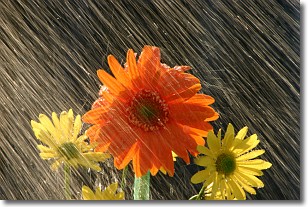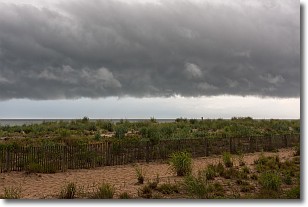Weather Alert in Colorado
Fire Weather Watch issued April 25 at 2:52AM MDT until April 27 at 8:00PM MDT by NWS Grand Junction CO
AREAS AFFECTED: Lower Colorado River; Colorado River Headwaters
DESCRIPTION: ...RED FLAG WARNING IN EFFECT FROM NOON TO 8 PM MDT SATURDAY FOR GUSTY WINDS, LOW RELATIVE HUMIDITY AND DRY FUELS FOR FIRE WEATHER ZONES 203 AND 205 BELOW 7000 FEET... ...FIRE WEATHER WATCH REMAINS IN EFFECT FROM SUNDAY AFTERNOON THROUGH SUNDAY EVENING FOR GUSTY WINDS, LOW RELATIVE HUMIDITY AND DRY FUELS FOR FIRE WEATHER ZONES 203 AND 205 BELOW 7000 FEET... The National Weather Service in Grand Junction has issued a Red Flag Warning below 7000 feet for gusty winds, low relative humidity and dry fuels, which is in effect from noon to 8 PM MDT Saturday. The Fire Weather Watch is no longer in effect. * AFFECTED AREA...In Colorado, Fire Weather Zone 203 Lower Colorado River and Fire Weather Zone 205 Colorado River Headwaters below 7000 feet. * TIMING...For the first Red Flag Warning, from noon today to 8 PM MDT this evening. For the second Red Flag Warning, from noon to 8 PM MDT Saturday. For the Fire Weather Watch, from Sunday afternoon through Sunday evening. * WINDS...South 15 to 25 mph with gusts up to 40 mph. * RELATIVE HUMIDITY...8 to 13 percent. * IMPACTS...Fires will catch and spread quickly. Exercise extreme caution with any outdoor burning.
INSTRUCTION: A Red Flag Warning means that critical fire weather conditions are either occurring now, or will shortly. A combination of strong winds, low relative humidity, and warm temperatures can contribute to extreme fire behavior. A Fire Weather Watch means that critical fire weather conditions are forecast to occur. Listen for later forecasts and possible Red Flag Warnings.
Want more detail? Get the Complete 7 Day and Night Detailed Forecast!
Current U.S. National Radar--Current
The Current National Weather Radar is shown below with a UTC Time (subtract 5 hours from UTC to get Eastern Time).

National Weather Forecast--Current
The Current National Weather Forecast and National Weather Map are shown below.

National Weather Forecast for Tomorrow
Tomorrow National Weather Forecast and Tomorrow National Weather Map are show below.

North America Water Vapor (Moisture)
This map shows recent moisture content over North America. Bright and colored areas show high moisture (ie, clouds); brown indicates very little moisture present; black indicates no moisture.

Weather Topic: What is Precipitation?
Home - Education - Precipitation - Precipitation
 Next Topic: Rain
Next Topic: Rain
Precipitation can refer to many different forms of water that
may fall from clouds. Precipitation occurs after a cloud has become saturated to
the point where its water particles are more dense than the air below the cloud.
In most cases, precipitation will reach the ground, but it is not uncommon for
precipitation to evaporate before it reaches the earth's surface.
When precipitation evaporates before it contacts the ground it is called Virga.
Graupel, hail, sleet, rain, drizzle, and snow are forms of precipitation, but fog
and mist are not considered precipitation because the water vapor which
constitutes them isn't dense enough to fall to the ground.
Next Topic: Rain
Weather Topic: What are Shelf Clouds?
Home - Education - Cloud Types - Shelf Clouds
 Next Topic: Sleet
Next Topic: Sleet
A shelf cloud is similar to a wall cloud, but forms at the front
of a storm cloud, instead of at the rear, where wall clouds form.
A shelf cloud is caused by a series of events set into motion by the advancing
storm; first, cool air settles along the ground where precipitation has just fallen.
As the cool air is brought in, the warmer air is displaced, and rises above it,
because it is less dense. When the warmer air reaches the bottom of the storm cloud,
it begins to cool again, and the resulting condensation is a visible shelf cloud.
Next Topic: Sleet
Current conditions powered by WeatherAPI.com




